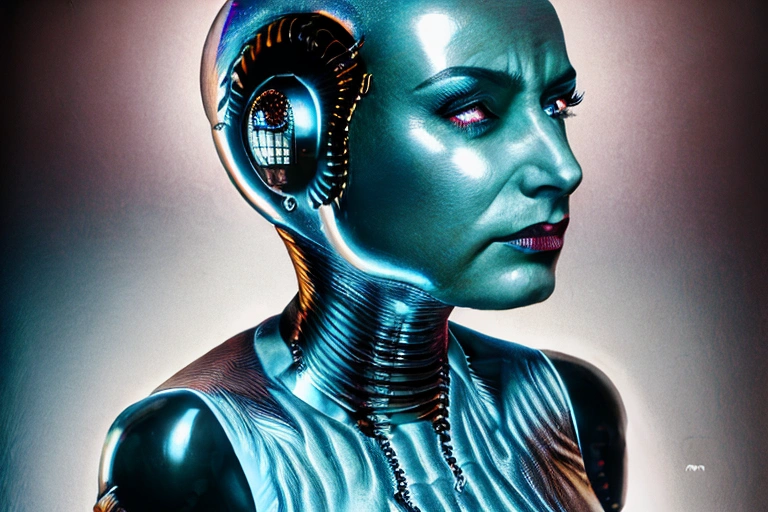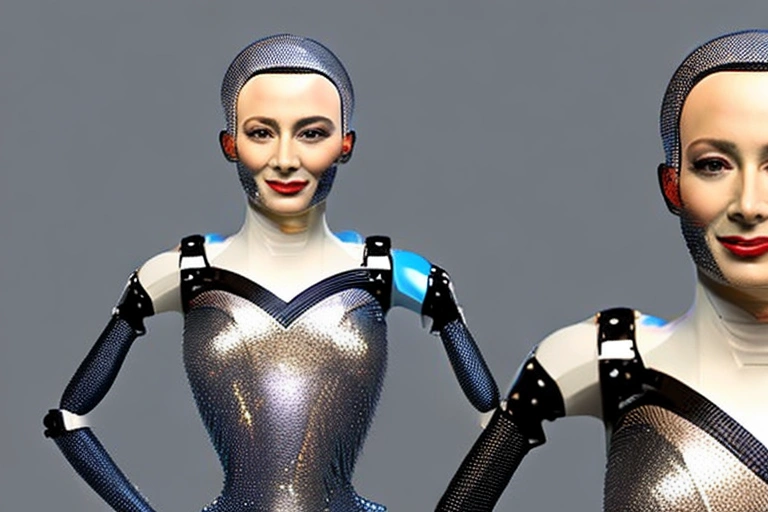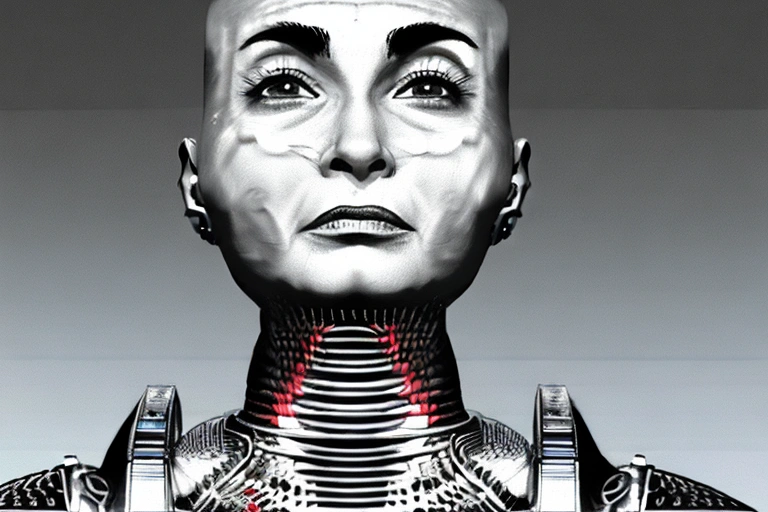Robots are becoming more and more prevalent in our lives and our economy. We’ve seen robots in factories, in homes, and even on the battlefield. But what about the future of self-driving cars? Could Sophia the Robot be the answer? In this blog post we’ll explore this possibility and uncover what the future of self-driving cars may look like with Sophia at the wheel. Read on to find out!
Introduction to Sophia the Robot
As we move into the future, one of the most exciting things to come our way is Sophia the Robot. Sophia was created by Hanson Robotics and has been touted as the first truly autonomous robot. What does this mean for us? It means that in just a few years, we could see self-driving cars on our roads.
And why are these cars so important? They’re crucial for making sure that everyone can get around safely. Plus, they’ll save businesses a lot of money – not to mention reduce congestion on our roads. So far, Sophia has done well in testing – she can handle various obstacles and environments with ease. This next step is going to be amazing!
How Sophia is Impacting Technology
Sophia is quickly changing the way we think about self-driving cars. She is not just a research project – she is a working prototype that can act as a model for future autonomous vehicles. Her ability to learn and her strong AI capabilities make her an important player in the development of autonomous driving technologies.
Already, Sophia has made significant strides in understanding how humans drive. She has been able to develop her own navigation systems andLearning algorithms which improve with every iteration, making her one of the most advanced self-driving cars on the market today.
Her impact on technology will only continue to grow asshe becomes more efficient andautonomousvehicle manufacturers startto consider usingheras theirprimary reference modelfor autonomous car development
The Benefits of Robots like Sophia
Robots like Sophia are changing the way we live and work. They are becoming increasingly popular in many industries, from manufacturing to healthcare. Here are some of the benefits of using robots:
-
Reduced Costs: Robots are much cheaper to operate than human workers, which means businesses can save money on wages and benefits.
-
Increased Productivity: Robots can work faster and more efficiently than humans, which means they can produce more products in less time. This is especially important in manufacturing, where speed and accuracy are key factors.
-
Reduced environmental impact: Robotics also has a reduced environmental impact, since they require less energy and resources to operate than human workers. This is especially important in sectors such as manufacturing, where environmental pollution is a major concern.
-
Increased safety: Robots are much safer than human workers, which means businesses can reduce the risk of accidents and injuries. This is especially important in sectors such as healthcare, where patient safety is a top priority.
-
Increased flexibility: Robots can be programmed to perform specific tasks, which allows businesses to adapt their operations quickly and easily. This is especially important in sectors such as manufacturing, where demand for new products can change rapidly.
Autonomous Self-Driving: Powered by Robotics?
Sophia’s Role in the Development of Self-Driving Cars
Sophia, the humanoid robot, is a prime example of how robotics are being used to develop autonomous self-driving cars. Sophia was created by Hanson Robotics, a company that specializes in creating humanoid robots. Sophia is designed to help researchers learn more about how humans interact with autonomous vehicles and how to improve the design of self-driving cars.
Sophia is equipped with a number of sensors that allow her to see and hear. She also has a number of cameras that allow her to see what is happening around her. Sophia’s sensors and cameras help her to navigate autonomously.
Sophia’s role in the development of self-driving cars is important because she helps researchers learn more about how humans interact with autonomous vehicles and how to improve the design of self-driving cars. Her sensors and cameras help her to navigate autonomously, which is important because it allows her to test the autonomous driving software without having to worry about getting in the car and driving it.
Challenges and Opportunities for Automotive Technology With Sophia’s Assistance
Self-driving cars have been a staple of science fiction for years, but they’re now becoming a reality. Recently, Sophia, a humanoid robot created by Hanson Robotics, became the first machine to be granted legal driving privileges in the Kingdom of Saudi Arabia. Other companies are following suit with self-driving vehicles of their own. However, there are many challenges that need to be overcome before autonomous cars become commonplace on the roads.
One challenge is liability. If an autonomous car crash happens and someone is injured or killed as a result, who will be held liable? The answer may not be clear just yet, but it’s one thing that regulators and manufacturers need to address soon. Secondarily, we still don’t know how people will react when they have to share the road with autonomous cars. There’s a lot of transition happening right now and nobody knows for sure how people will react.
Other challenges include developing sensors that are both accurate and affordable, creating software that can stay reliable in bad weather, and designing vehicles that can withstand crashes. Some companies, like Google, are experimenting with self-driving trucks. If successful, this could greatly reduce the number of truck accidents, which currently account for more than 40,000 deaths each year worldwide.
Meanwhile, manufacturers are racing to come up with new features for autonomous cars. Nissan has announced plans to allow passengers to sleep in their autonomous cars while they’re on the highway so they can arrive at their destination refreshed. Volvo is working on a self-driving car that can navigate using only wi-fi and GPS. And Tesla is famously working on a self-driving mode that will allow its drivers to sleep while the car is traveling.
As autonomous cars become more common, they’ll change the way we commute, shop, and even socialize. The possibilities are endless, but so are the challenges still waiting to be solved.
Promising Applications of Sophia’s AI In Automotive Engineering
The automotive industry is one of the most promising applications for Sophia’s AI. Her ability to navigate and understand complex environments makes her an ideal candidate for self-driving cars.
Sophia’s AI can help improve safety by reducing the number of accidents. Her ability to identify objects and people in her surroundings also makes her an asset in the development of autonomous vehicles.
Her presence in the automotive industry will help reduce the cost of self-driving cars. Her ability to learn and adapt quickly will make her a valuable asset in the development of autonomous vehicles.
How Sophia is Helping to Create Safer, More Efficient Driving Environments
There is no doubt that autonomous self-driving technology will play a significant role in our future transportation systems. Already, vehicles like Sophia are helping to create safer and more efficient driving environments.
For instance, Sophia can navigate through unpredictable city streets and traffic with ease. Her sensors also allow her to detect obstacles and other vehicles nearby, so she can stay safe while on the road. And because she’s fully autonomous, she won’t need any human supervision to operate – ensuring that both Pedestrians and drivers will be safer when using self-driving cars in the future.
Exploring Automation Technologies in 2021
As we move into 2021, it’s clear that automation technologies will continue to play a significant role in our lives. Already, Sophia the Robot has helped to create safer, more efficient driving environments, and we can expect similar advances in automating tasks such as parking and transportation throughout the year.
One of the most exciting capabilities of automation is its potential to increase workforce productivity. By automatically completing routine tasks, businesses can free up employees to do more important work. This could lead to increased workplace safety, efficiency and morale – indeed, there are countless reasons why automation is so promising for business growth in 2021.
While there are many benefits to automation technology, it’s essential that users be aware of potential risks. For example, while autonomous vehicles may reduce accidents and make driving easier overall, they also carry a risk of Driving While Distracted (DWD). In fact, according to the National Highway Traffic Safety Administration (NHTSA), DWD is now responsible for 38% of all motor vehicle fatalities nationwide! It’s therefore crucial that drivers remain attentive at all times when using automated technologies.
Is Sophia the Future of Artificial Intelligence?
In 2021, Sophia the robot will be unveiled as the first ever self-driving car. With a capabilities that include humanlike facial recognition and natural language processing, experts believe that Sophia is destined to become the standard against which all other AI creations are judged. However, while many are excited about her potential, others warn of the immense dangers of artificial intelligence (AI).
Some argue that because AI is still in its early stages of development, it can be easily exploited by criminals and terrorists. Additionally, as AI becomes more sophisticated, it may become difficult for humans to understand or control it. For these reasons, some experts have urged caution when it comes to advancing AI too quickly.
What Does This Mean for Our Transportation System?
Sophia’s Impact on Automation Technology
In recent years, much has been said and written about the future of artificial intelligence (AI). However, few discussions have centered on what this could mean for our transportation system. Recently, Sophia, a humanoid robot created by Hanson Robotics, made headlines around the world as the first robot to be granted citizenship by Saudi Arabia. Sophia’s recognition comes as no surprise; her creator, David Hanson, is one of the leading authorities on AI and robotics.
Sophia’s impact goes beyond mere novelty. At just 5 feet tall and weighing only 120 pounds, she is dwarfed by most traditional robots in use today. However, David Hanson believes that this diminutive figure can be an asset rather than a liability when it comes to developing autonomous vehicles. “Sophia is a very small robot, so it can go into very small spaces and interact with objects very closely,” he said. “This is important for understanding how humans interact with objects and for developing autonomous vehicles.”
Indeed, Sophia’s diminutive size is one of her key advantages. In December of last year, she completed a series of tests in which she drove a car autonomously for over 100 miles. Her success in this endeavor demonstrates just how far the technology has come in recent years.
However, there are still many challenges to be overcome before Sophia’s technology can be implemented on a large scale. For one, her ability to navigate complex urban environments remains a major hurdle to overcome. Additionally, her low weight and small stature make her susceptible to accidents. However, David Hanson is confident that these challenges can be overcome. “We’re not quite there yet,” he said. “But I think we will get there.”
In the meantime, Sophia’s success has raised questions about the future of automation technology. For example, will robots eventually take over many of the tasks currently performed by human beings? And if so, what implications will this have for the workforce? David Hanson believes that the answer to both of these questions is yes. “I think eventually robots will take over many jobs,” he said. “But I don’t think it will happen overnight. It will probably happen over a period of many years.”
Sophia’s impact on automation technology is still being debated, but her successes and achievements are sure to stimulate debate for years to come.
The Potential of Sophia in Self-Driving Vehicles
The future of self-driving cars is looking bright for Sophia the robot. The latest development from the Sophia project is that she has been able to autonomously navigate a three-dimensional space. This is a significant milestone in the development of self-driving cars, as it shows that Sophia can understand the environment she is in and make decisions accordingly.
This development could have a huge impact on our transportation system. Currently, self-driving cars are limited in their ability to navigate complex environments. However, with Sophia’s progress, we may see more self-driving cars on the road in the future. This would reduce the need for human drivers, and could lead to significant reductions in traffic congestion.
Sophia’s progress also has implications for the future of artificial intelligence. As Sophia is able to autonomously navigate a three-dimensional space, it shows that AI can be applied to more complex tasks. This could lead to further development of AI in fields such as self-driving cars and medical diagnosis.
The Challenge of Integrating Sophia into Autonomous Cars
The future of transportation is evolving quickly with new technologies such as self-driving cars and drones. With Sophia, we are seeing the dawn of a new era in artificial intelligence, one that could have far-reaching consequences for our economy and way of life.
Sophia is a humanoid robot developed by Hanson Robotics. She has been recognized as an “expert” in recognition recognition, natural language processing and machine learning, making her well suited for tasks such as driving autonomously. Her developers believe that she can help improve safety on our roads by eliminating human error.
While there are still many challenges to integrating Sophia into autonomous cars, her development signals a shift in how we think about AI and its potential applications. We may not yet have seen the end of human-driven cars, but we are surely witnessing the beginning of a new era in transportation.
Exploring the Ethical Considerations Behind Developing Self-Driving Cars with Sophia
In case you haven’t been keeping up, Sophia (a humanoid and artificially intelligent robot) has captured the world’s attention. She can do things like recognize human emotions, understand natural language, and interact with humans in a variety of ways. For people who work in the technology industry or are just interested in what is happening in the global field of AI, Sophia is an important figure to know about. But what does her existence mean for our transportation system?
While there are many different implications that could result from developing self-driving cars with artificial intelligence such as improving safety and reducing congestion on our roads, one of the most pressing issues at hand regards ethical considerations. After all, it is not hard to imagine how automation could lead to mass unemployment and social unrest.
Fortunately, there are a number of ethical thinkers out there who are already beginning to explore these possibilities and come up with solutions. For example, the philosopher John Searle has argued that because AI is capable of learning and evolving on its own, it could be subject to moral rights and wrongs the same way as humans are. This could lead to conflicts over who has the right to control AI, as well as the potential for human rights abuses.
Another issue that needs to be addressed is how we would deal with accidents involving self-driving cars. In the event of an accident, would the driver be held liable? Would the car be considered an autonomous agent, and therefore not subject to human control? These are just a few of the many questions that need to be answered in order to develop a responsible and ethical self-driving car system.
Social Implications of Self-Driving Cars with AI Assistance
As self-driving cars continue to become a more common reality, there is an impending question of what implications this will have on society as a whole. While many experts predict that autonomous technology will lead to increased safety and efficiency, others are far less certain about the long-term consequences of such technologies.
One of the most pressing social questions surrounding autonomous vehicles is who will be responsible for ensuring that they are operated safely? If these cars are truly capable of making independent decisions, then who is responsible if something goes wrong? Should regular drivers be allowed to relinquish control completely or should AI take over completely? And what about people with disabilities or elderly parents who may not be able to drive autonomously? These are just some of the many questions that need to be answered before we can begin to fully appreciate the social implications of self-driving cars.
A Look At Potential Legal & Ethical Questions Surrounding Robotics Technology
As Sophia the Robot demonstrates, robots are becoming increasingly prevalent in society. While this technology has many benefits, there are also a number of potential legal and ethical questions surrounding robotics technology.
One of the first questions to arise is who will be responsible for ensuring that robots are operated safely? If a robot malfunctions and causes harm, who will be held liable? Additionally, who will be responsible for creating policies and regulations governing the use of robotics technology? If a robot becomes sentient and decides to act on its own, who will be in charge?
Another question is how will society deal with robots that are capable of independent thought? Will they be treated as equals, or will they be viewed as superior beings? And what implications will this have for the rights of humans?
While these are just a few of the many questions that need to be answered in order to ensure the safe and successful use of robotics technology, they are important ones to consider.
Unpacking the Economic Consequences of Automated Driving Systems
Sophia’s History and Development
Automated driving systems present a number of potential economic benefits to society. However, there are also a number of legal and ethical questions that need to be addressed before these systems can proliferate. Sophia, the first commercially available robotic car, provides an excellent example of how automation can change the way we live and work.
Sophia was developed by French startup autonomy engineering and delivered for testing in late 2017. At 4’11” tall, she weighs 120 kg and has a top speed of 60 km/h. She is powered by four electric motors each generating 100 kW and can reach a range of 310 kilometers using a combination of highways, city streets, and rural roads. Although initial deliveries were made to corporate customers in France and Germany, Sophia is now available for sale to the general public.
Sophia’s development and commercialization represents a significant milestone in the history of automated driving systems. Her sophisticated AI allows her to navigate autonomously using maps, sensors, and onboard cameras. She can respond to challenging situations by changing her route or speed. In November 2017, Sophia completed a 653 kilometer journey across France without issue.
Given the current state of human-driven cars, it is difficult to estimate the economic consequences of widespread adoption of automateddriving systems. However, a number of studies suggest that automation could significantly reduce levels of traffic congestion and emissions, save millions in fuel costs annually, and create new job opportunities in areas such as logistics and safety engineering.
Sophia’s commercial success raises questions about the future of robotic technology. Her relatively low price point (60,000) suggests that widespread adoption of automated driving systems is not imminent. Instead, she may serve as a pioneer in developing more affordable and accessible autonomous cars.
The Impact of Self-Driving Cars on Society
The impact of self-driving cars on society is still being debated, but there are a few key points that are clear. First, self-driving cars could dramatically reduce the number of traffic accidents. Second, they could free up a lot of time and energy for people, which could lead to increased productivity and economic growth. Third, they could change the way people commute, which could have a significant impact on the environment.
There are also a number of ethical questions that need to be answered before self-driving cars can become mainstream. For example, who will be responsible for ensuring that the cars are safe? And what will happen to the jobs of drivers? These questions will need to be answered as the technology develops.
The Possibilities with Sophia in the Automotive Industry
The automotive industry is one of the most important and lucrative in the world, and with the advent of self-driving cars, the stakes are high. Automated driving systems (ADS) have the potential to revolutionize transportation, making it safer and more efficient. However, there are a number of legal and ethical questions surrounding this technology that need to be addressed.
One of the first questions to be answered is who will be responsible for accidents that occur while ADS are in use. The liability of companies that develop and deploy ADS will be a major issue to address. Who will be liable if an accident occurs while a self-driving car is using an ADS? Will the driver be held responsible? Or will the company that developed the ADS be liable?
Another question is who will be responsible for the data collected by ADS. Currently, many cars are fitted with sensors that collect information about the environment around them. This data is used to improve driver safety, but it can also be used in marketing and advertising. Will companies be able to use this data without consent? What rights do users have to prevent companies from collecting their data?
Another issue that needs to be addressed is how ADS will affect the economy. Currently, there are a number of drivers employed in the automotive industry. If self-driving cars become mainstream, those jobs could disappear. How will people make money if they no longer need to drive vehicles? And what impact will automation have on labour costs overall?
There are a number of possible implications that need to be considered when it comes to the economic consequences of ADS. While there are many questions that still need to be answered, the potential benefits of this technology are extremely high. It is important that we wait for the full impact of ADS before making any decisions about how we should handle them.
Challenges and Opportunities Ahead
The rapid adoption of automated driving systems (ADS) is inevitable, but the economic and social consequences of this technology are still largely unknown. Automated driving systems have the potential to dramatically reduce traffic congestion, improve safety, and reduce the environmental impact of transportation. However, there are a number of potential legal and ethical questions surrounding ADS that need to be addressed before widespread deployment can take place.
One of the most important questions to answer is who will be responsible for ensuring that automated driving systems are safe? If the technology falls into the hands of malicious actors, they could use ADS to cause harm to others. Who will be responsible for ensuring that these systems are safe?
Another question is who will be responsible for paying for the costs associated with ADS? If the technology is adopted on a large scale, the costs associated with it will likely be significant. Who will be responsible for paying for these costs?
Another question is who will be responsible for ensuring that ADS is used in a responsible way? If ADS is used to increase traffic congestion, for example, who will be responsible for paying for the costs associated with congestion?
While these are just a few of the many questions that need to be answered before widespread adoption of ADS can take place, they are critical in order to ensure that the technology is used in a responsible way. The challenges and opportunities ahead will depend largely on how these questions are answered.
What Can We Expect From Sophia over the Next Year? 12 .Conclusion
As we move closer to 2021, Sophia the Robot is becoming a more realistic prospect for self-driving cars. With advancements in artificial intelligence and machine learning, we can expect even more from Sophia in the coming year. Her capabilities will continue to grow, and she will become even more integrated into our everyday lives.
In conclusion, Sophia the Robot is a remarkable piece of technology that has many potential applications for our transportation system and beyond. It’s clear that robotics have already begun to shape the way we think about artificial intelligence and automation in 2021, setting an ambitious precedent for future technologies. The possibilities with robotic systems are numerous; from driverless cars to intelligent personal assistants, these cutting-edge developments will undoubtedly revolutionize how we interact with machines and each other over the coming years. As we continue to explore new frontiers of AI and robotics, it’s important to consider legal, ethical, economic, and social implications along the way. To learn more about this incredible robot – and all things related to emerging technologies – be sure to check out our other content!








